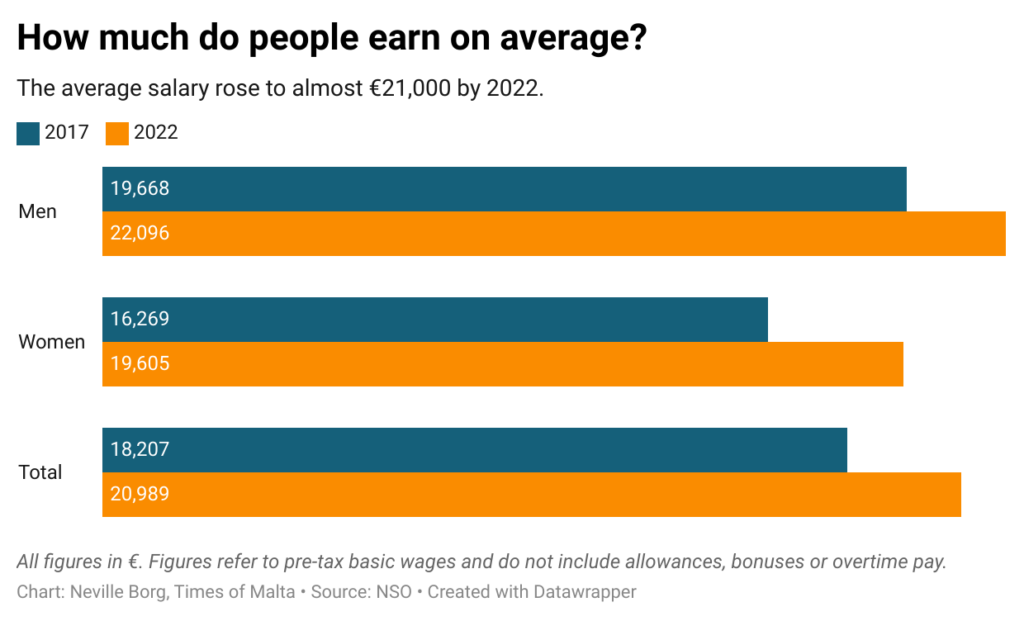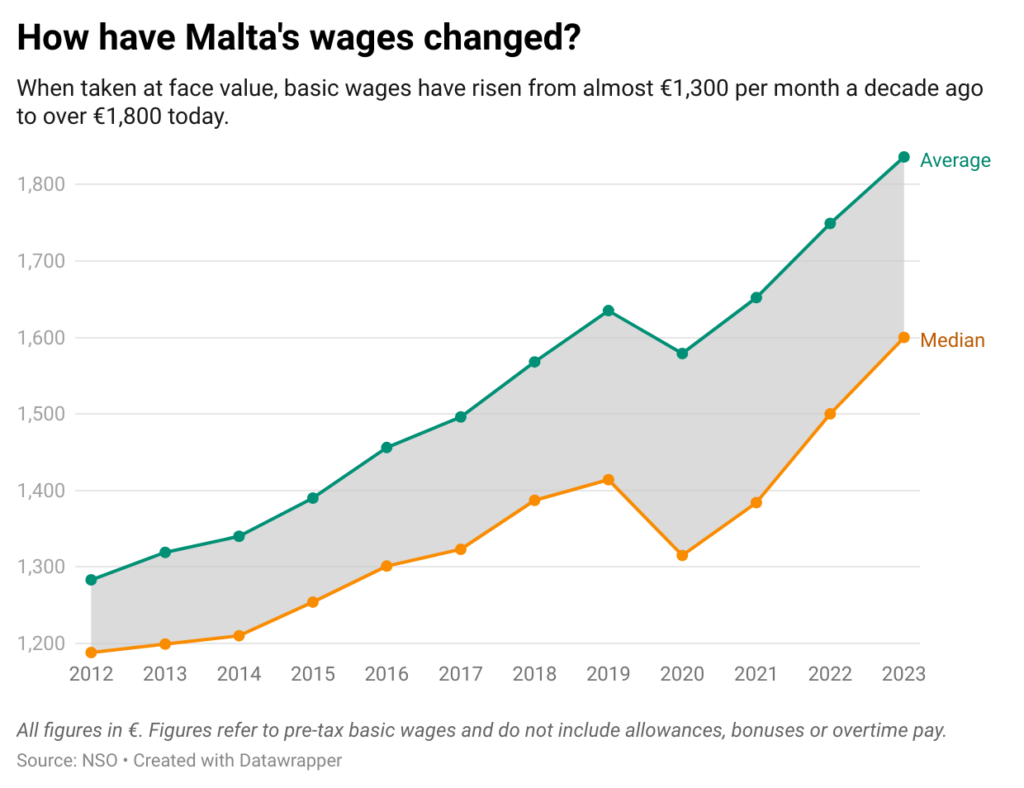New data published on Tuesday 23 July puts paid to ongoing speculation about how much workers in Malta earn on average.
The debate over salaries is a regular feature of public discourse in Malta, with social media users frequently resorting to anecdotal or downright fabricated figures to drive their point home.
But data published by Malta’s National Statistics Office, although imperfect, gives the clearest picture yet of where average salaries lie.
Average salary up to €21,000 per year
The average salary in Malta rose to €20,989 before tax by 2022, according to newly published data.
This stood at €18,207 in 2017, suggesting that salaries have risen by some €1,800 over the past eight years.
Men were, unsurprisingly, the highest earners, receiving an average wage of €22,096, some €2,400 more than they did eight years ago.
But women saw a more rapid growth in their salaries, going from a little over €16,000 in 2017 to €19,605 in 2022, a sharp rise of over €3,300.

Men in Rabat, Siġġiewi and Ħaż-Żebbuġ among top earners
The figures show how people living in all parts of the country have seen a bump to their wages, rising sharply since 2020.
Men living in Malta’s northern towns (Mellieħa, Mosta, and Naxxar, amongst others) appear to have had it best, seeing their pay packet rise from under €20,000 in 2020 to almost €24,000 two years later, making them the second-highest earners in the country.
That title, however, remains in the hands of men from Malta’s western district (which includes the towns of Rabat, Siġġiewi and Ħaż-Żebbuġ), who earn a little under €25,000.
People in other regions, including Gozo and several of Malta’s southern towns have also seen their salaries rise.
Foreign worker influx slows salary rises in some areas
The stark exception to this is men in Malta’s northern harbour towns, who have seen only a marginal increase in their wages.
This region, which includes the towns of Sliema, Gżira and Msida, has seen a large influx of foreign workers in recent years, which may account for the slower rise in salaries.
With almost 63,500 foreigners, almost half Malta’s entire foreign population, now calls these towns their home.
What about the median salary?
But this data comes with some caveats.
For one thing, it doesn’t include allowances, bonuses and overtime payments, which often are crucial to supplementing people’s salaries and helping them make ends meet. It also doesn’t include self-employed workers, focusing instead on employees.
Secondly, these are averages, leaving open the possibility that a small number of high-earners could be skewing the true figures.
More recent data given to Times of Malta by NSO shows that this could be the case.
According to this data, the average monthly salary in 2023 rose to €1,836, or some €22,000 per year.

The median salary, on the other hand, hovered below this figure, at €1,600 per month, or a little over €19,000 each year. In practice, this means that half the population earns less than the monthly €1,600, with the remaining half earning more.
A recent Times of Malta report found that although wages have increased by 26% since 2016, they have only grown by 6% in real terms, when adjusted for inflation, while the gap between high and low earners appears to be on increasing.





